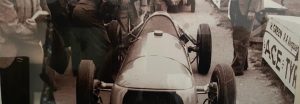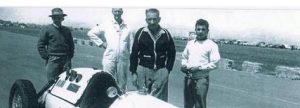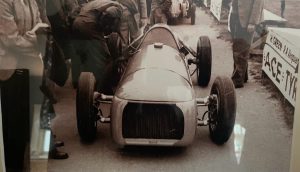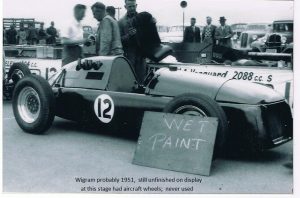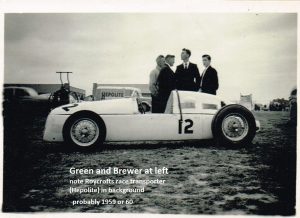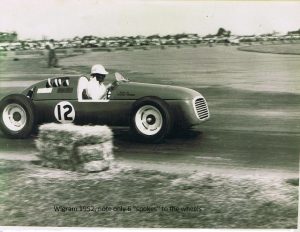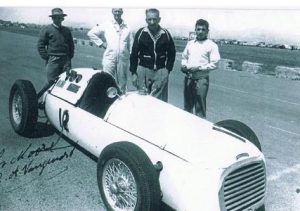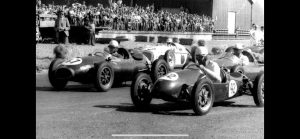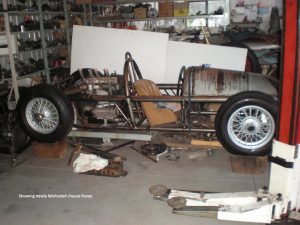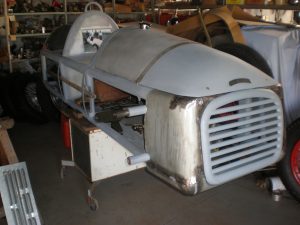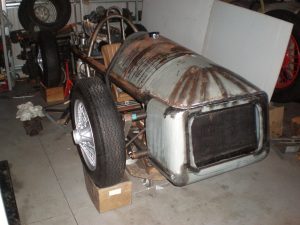The story behind the RA Grand Prix cars

During the latter half of the 1930s Grand Prix racing was completely dominated by the two racing teams, one from Mercedes Benz and the other Auto Union. Collectively referred to as “The Silver Arrows”.
Whilst both teams set new standards for technological developments, only one of them – Auto Union – chose to adopt a radical new approach to Grand Prix car design, positioning the engine behind the driver.
After WWII Grand Prix racing continued, however the concept of the Auto Union was largely forgotten and the norm for GP cars was to remain front engine / rear drive until the Coopers arrived in the late 1950s……….since when the Auto Union layout has become standard.
However, during this early Post WWII era there were two exceptions to this norm, both of which took their inspiration from Auto Union
- In Italy Cisitalia commissioned Dr Porsche (the original Auto Union designer) to design a 1.5L supercharged Grand prix car. Which fundamentally followed the Auto Union concept.
- In New Zealand 2 ex WW2 Aircraft mechanics (Hec Green / Jack Brewer) developed the RA Vanguard. The design being based on the Auto Union, details of which they found in a declassified British Intelligence Paper that studied the German Racing programmes of the 1930s
The difference in Budgets between these 2 Projects may have led to significant difference in their relative execution. However, the basic design concepts do have much in common. i.e.
- Rear / Mid-Engine
- Similar Independent Suspension
RA4 Vanguard
The RA4 Vanguard was the fourth of five innovative single-seaters built by Hec Green and Jack Brewer Christchurch New Zealand. RA4 was conceived and constructed between 1949 and 1951.Due to the lack of raw materials post WW2 the pair came up with an expedient plan to utilise as many ex-WW2 aircraft parts as possible – providing some novel technical solutions for the vehicle dynamics.
- The front suspension was Trailing Arm as used by Auto Union, but in this case controlled by rubber shock cords (not springs / bars) running on a system of pulleys and levers – all adjustable.
- The rear suspension was an unusual low pivot swing axle arrangement, with Spring / Damper control by Hydraulic oleo struts from the tail wheels of P40 Kittyhawk fighter aircraft.
- The design was entirely revolutionary for a GP car with a mid-engine configuration, which at that time was only seen in the new air cooled 500cc Formula Three cars.
- The engine was based on a modified Standard Vanguard; larger head studs, cross drilled crankshaft, and a Hec Green designed and ground camshaft. It was fed and supercharged via a pair of SU carburettors through an aircraft cabin blower chain-driven from the front of the crankshaft to provide 14 pounds of boost. Fuel was a methanol blend, with the engine giving over 200bhp and detonation was helped by water injection.
- The transmission was a 3-speed sequential transaxle of their own design and manufacture. This proved well up to the task and is still in the car today.
Car History
- The RA4 first appeared at the 1951 Lady Wigram International meeting at Christchurch New Zealand
- The car performed well (despite lack of development) at many International and local meetings in NZ from 1951 through until 1960 when it was out-classed by the “new” rear-engine Coopers…)The RA4 performed well during the 1950s entering the Lady Wigram trophy numerous times, winning the 1952 NZ beach racing championship and the 1951 Class D speed record.
- Hec Green went on to race an RA Vanguard in the 1961 NZ Lady Wigram grand prix finishing in 7th place racing against the greats of Stirling Moss, John Surtees and Jack Brabham
- After laying abandoned for many years the car was eventually rebuilt with support from Jack Brewer in the 1990s changing hands number of times until purchased by Ian Jones in 2021.
- Ian being a PPL pilot purchased the car due to its aviation heritage and having appreciated its ground breaking design and rarity decided to embark on a complete ground up restoration.
- Ian engaged Pace Historics owned by Gareth Burnett to carry out the restoration which involved restoring every aspect of the car from the chassis, engine rebuild to panel re fabrications (carried out my Ingham Customs)
- After many hundreds of hours of work the result is a truly remarkable restoration which the team believe Hec and Jack would be proud of.
- Alongside the Auto Union and the Cisitalia the RA4 is without doubt one of the most revolutionary post-war Grand Prix cars still in existence and Ian’s ambition is now for the car to compete in historic classic races which is where it belongs!
